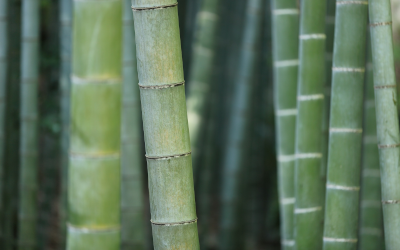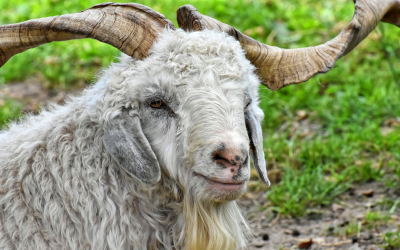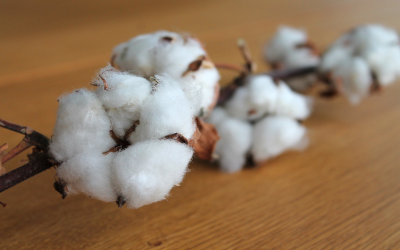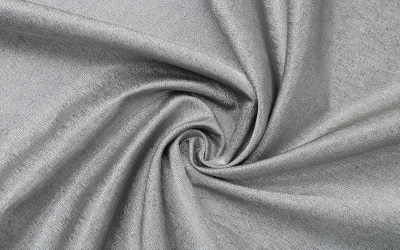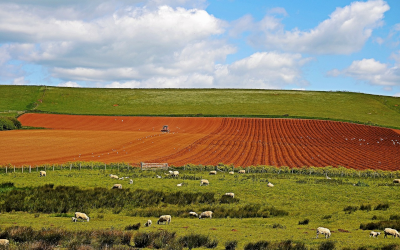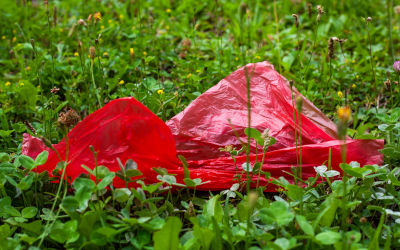
Life Cycle of Clothing
Clothing: Start to Finish
You are probably familiar with the life cycle of living things like butterflies, frogs or people. But have you ever thought that objects have life cycles too? Well they do - in a way.
Every piece of clothing you own was designed, made, used and will be eventually thrown away. In a way, you can imagine that every garment is conceived, born, lives and eventually dies.
For the most part, the clothing life cycle is linear. That is changing as people find ways to reuse and recycle clothing.
The following interactive shows how the clothing life cycle generally works.
How do they compare?
Next, let’s take an in-depth side-by-side look at the life cycles of two pieces of clothing - an organic cotton t-shirt and a pair of polyester yoga pants.
As you look at this graphic, think about how the two life cycles are similar and different.

Organic Cotton T-shirt
Get Raw Materials: Cotton must be grown, harvested and processed. Organic cotton is grown without chemicals.
Make Yarn and Fabric: Machines spin cotton fibres together to make yarn. Other machines knit the yarn to make fabric.
Dye and Finish: Fabric can be coloured using dye. Fabric may also be treated with heat and chemicals to make it less fuzzy and easier to wash.
Make Garment: People and machines cut and sew fabric to make t-shirts.
Transport and Sell: Finished t-shirts are transported from where they are made to the consumer.
Wash and Wear: Detergent and fabric softeners can enter water systems. Energy is used with electric washing machines and dryers. Microfibres are shed, but they decompose.
After Use: Cotton is biodegradable and can be composted, although it takes many years. Some cotton is recycled.
Polyester Yoga Pants
Get Raw Materials: Crude oil must be extracted from the ground and refined.
Make Yarn and Fabric: Polyester polymers are made, melted and extruded as filaments. Machines spin filaments to make yarn. Other machines knit yarn to make fabric.
Dye and Finish: Filaments or fabric may be dyed. Fabric may also be treated with chemicals to make it softer, fire resistant and stain resistant.
Make Garment: People and machines cut and sew fabric to make yoga pants.
Transport and Sell: Finished yoga pants are transported from where they are made to the consumer.
Wash and Wear: Detergents, fabric softeners and plastic microfibres can enter water systems. Energy is used with electric washing machines and dryers.
After Use: Polyester is not biodegradable and can remain in landfills up to 200 years. Some polyester is recycled.
Long Description
Organic Cotton T-shirt
Get Raw Materials: Cotton must be grown, harvested and processed. Organic cotton is grown without chemicals.
Make Yarn and Fabric: Machines spin cotton fibres together to make yarn. Other machines knit the yarn to make fabric.
Dye and Finish: Fabric can be coloured using dye. Fabric may also be treated with heat and chemicals to make it less fuzzy and easier to wash.
Make Garment: People and machines cut and sew fabric to make t-shirts.
Transport and Sell: Finished t-shirts are transported from where they are made to the consumer.
Wash and Wear: Detergent and fabric softeners can enter water systems. Energy is used with electric washing machines and dryers. Microfibres are shed, but they decompose.
After Use: Cotton is biodegradable and can be composted, although it takes many years. Some cotton is recycled.
Polyester Yoga Pants
Get Raw Materials: Crude oil must be extracted from the ground and refined.
Make Yarn and Fabric: Polyester polymers are made, melted and extruded as filaments. Machines spin filaments to make yarn. Other machines knit yarn to make fabric.
Dye and Finish: Filaments or fabric may be dyed. Fabric may also be treated with chemicals to make it softer, fire resistant and stain resistant.
Make Garment: People and machines cut and sew fabric to make yoga pants.
Transport and Sell: Finished yoga pants are transported from where they are made to the consumer.
Wash and Wear: Detergents, fabric softeners and plastic microfibres can enter water systems. Energy is used with electric washing machines and dryers.
After Use: Polyester is not biodegradable and can remain in landfills up to 200 years. Some polyester is recycled.
Does the life cycle have to be linear?
The short answer is NO! Materials can be recycled and clothing does not need to end up in landfills. To learn more, check out our backgrounder on a growing trend in the fashion industry known as circularity.
Knowledge Check
References
Barnhardt Purified Cotton (2017, July). Answering All of Your Cotton Biodegradability Questions. https://barnhardtcotton.net/blog/cotton-biodegradability/
Fashion On Climate (n.d.). Fashion Value Cycle. http://www2.globalfashionagenda.com/initiatives/fashion-on-climate/#/fashion-value-cycle
Fibre2Fashion. (2010, March). Textile Wastewater can make a Difference. https://www.fibre2fashion.com/industry-article/4661/textile- -can-make-a-difference.
Palacios-Mateo, C., Y. van der Meer & G. Seide (2021). Analysis of the polyester clothing value chain to identify key intervention points for sustainability. Environmental Sciences Europe 33 (2). https://doi.org/10.1186/s12302-020-00447-x
Rossignol, K. (2014, Feb.) A Peek Inside A Landfill. Planet Aid. https://www.planetaid.org/blog/the-gas-from-your-clothes

